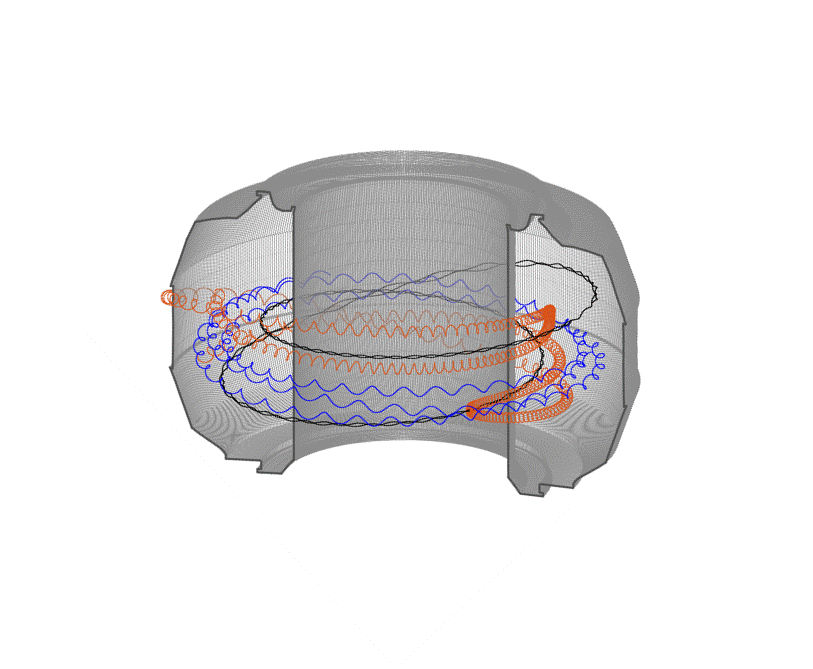
Filter News
Area of Research
- Advanced Manufacturing (2)
- Biological Systems (1)
- Biology and Environment (18)
- Clean Energy (16)
- Computational Biology (2)
- Computational Engineering (1)
- Fusion and Fission (27)
- Fusion Energy (15)
- Isotope Development and Production (1)
- Isotopes (9)
- Materials (17)
- Materials for Computing (3)
- National Security (3)
- Neutron Science (15)
- Nuclear Science and Technology (24)
- Nuclear Systems Modeling, Simulation and Validation (1)
- Supercomputing (22)
News Type
News Topics
- (-) Advanced Reactors (31)
- (-) Biomedical (57)
- (-) Fusion (53)
- (-) Software (1)
- (-) Space Exploration (25)
- (-) Statistics (3)
- 3-D Printing/Advanced Manufacturing (116)
- Artificial Intelligence (92)
- Big Data (51)
- Bioenergy (90)
- Biology (99)
- Biotechnology (22)
- Buildings (52)
- Chemical Sciences (66)
- Clean Water (29)
- Climate Change (96)
- Composites (27)
- Computer Science (185)
- Coronavirus (45)
- Critical Materials (28)
- Cybersecurity (34)
- Decarbonization (74)
- Education (4)
- Element Discovery (1)
- Emergency (2)
- Energy Storage (103)
- Environment (184)
- Exascale Computing (37)
- Fossil Energy (6)
- Frontier (41)
- Grid (61)
- High-Performance Computing (84)
- Hydropower (11)
- Irradiation (2)
- Isotopes (51)
- ITER (7)
- Machine Learning (46)
- Materials (136)
- Materials Science (131)
- Mathematics (9)
- Mercury (12)
- Microelectronics (4)
- Microscopy (47)
- Molten Salt (8)
- Nanotechnology (54)
- National Security (63)
- Net Zero (13)
- Neutron Science (125)
- Nuclear Energy (101)
- Partnerships (49)
- Physics (58)
- Polymers (29)
- Quantum Computing (34)
- Quantum Science (67)
- Renewable Energy (2)
- Security (23)
- Simulation (47)
- Summit (58)
- Sustainable Energy (122)
- Transformational Challenge Reactor (7)
- Transportation (87)
Media Contacts

Using artificial neural networks designed to emulate the inner workings of the human brain, deep-learning algorithms deftly peruse and analyze large quantities of data. Applying this technique to science problems can help unearth historically elusive solutions.

OAK RIDGE, Tenn., March 20, 2019—Direct observations of the structure and catalytic mechanism of a prototypical kinase enzyme—protein kinase A or PKA—will provide researchers and drug developers with significantly enhanced abilities to understand and treat fatal diseases and neurological disorders such as cancer, diabetes, and cystic fibrosis.

As the rise of antibiotic-resistant bacteria known as superbugs threatens public health, Oak Ridge National Laboratory’s Shuo Qian and Veerendra Sharma from the Bhaba Atomic Research Centre in India are using neutron scattering to study how an antibacterial peptide interacts with and fights harmful bacteria.

OAK RIDGE, Tenn., March 4, 2019—A team of researchers from the Department of Energy’s Oak Ridge National Laboratory Health Data Sciences Institute have harnessed the power of artificial intelligence to better match cancer patients with clinical trials.

Scientists have tested a novel heat-shielding graphite foam, originally created at Oak Ridge National Laboratory, at Germany’s Wendelstein 7-X stellarator with promising results for use in plasma-facing components of fusion reactors.
![Coexpression_hi-res_image[1].jpg Coexpression_hi-res_image[1].jpg](/sites/default/files/styles/list_page_thumbnail/public/Coexpression_hi-res_image%5B1%5D_0.jpg?itok=OnLe-krT)
While studying the genes in poplar trees that control callus formation, scientists at Oak Ridge National Laboratory have uncovered genetic networks at the root of tumor formation in several human cancers.

By automating the production of neptunium oxide-aluminum pellets, Oak Ridge National Laboratory scientists have eliminated a key bottleneck when producing plutonium-238 used by NASA to fuel deep space exploration.

The Department of Energy’s Oak Ridge National Laboratory is collaborating with industry on six new projects focused on advancing commercial nuclear energy technologies that offer potential improvements to current nuclear reactors and move new reactor designs closer to deployment.
![2018-P07635 BL-6 user - Univ of Guelph-6004R_sm[2].jpg 2018-P07635 BL-6 user - Univ of Guelph-6004R_sm[2].jpg](/sites/default/files/styles/list_page_thumbnail/public/2018-P07635%20BL-6%20user%20-%20Univ%20of%20Guelph-6004R_sm%5B2%5D.jpg?itok=DUdZNt_q)
A team of scientists, led by University of Guelph professor John Dutcher, are using neutrons at ORNL’s Spallation Neutron Source to unlock the secrets of natural nanoparticles that could be used to improve medicines.

Fusion scientists from Oak Ridge National Laboratory are studying the behavior of high-energy electrons when the plasma that generates nuclear fusion energy suddenly cools during a magnetic disruption. Fusion energy is created when hydrogen isotopes are heated to millions of degrees...


